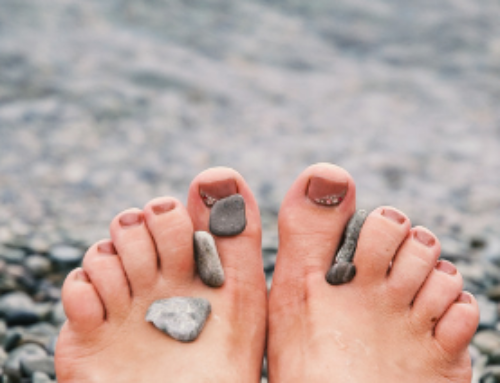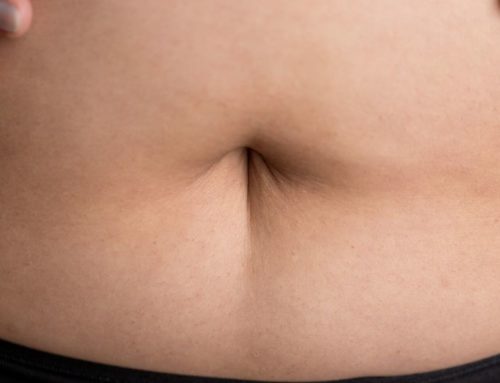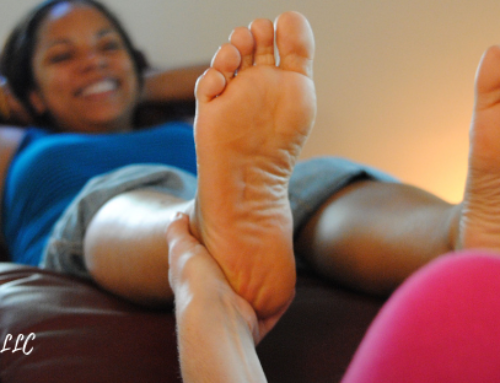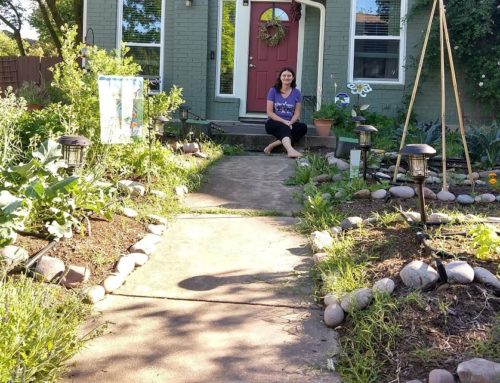My neighbors in the Southeastern part of Texas are dealing with flooding damages the likes we’ve never seen in this country. I’ve been asked by several different folks to talk about my personal experiences and thoughts on using aromatics and other natural ingredients in mold remediation efforts. Our big concern here is that the space is thoroughly dried, the mold is removed, and six months or six years from now the people dwelling in the home aren’t suffering from mold toxicity.
Here’s what I know about mold cleanup and essential oils and some other tools too!
Mold Remediation

Mold in a home after hurricane Katrina
You may not know that I grew up building and remodeling houses with my father in Northern New Mexico. Dad loved having an extra pair of hands and it was a valuable learning experience for everything from calculating the square footage of a room to installing a toilet tank to some small electrical projects. One year Dad took on a remodel project in an old miner’s cabin that had been added onto many times. The owners wanted to gut their master bathroom, expand it by bumping the walls into the neighboring room, and put in a pretty sweet soaking tub and a frosted glass shower.
Halfway into the demolition we discovered that the wall behind the shower had experienced significant moisture and was growing a spectacular fungal colony. As a teenager this was absolutely fascinating, it was hairy and fuzzy and took over the space behind the drywall along the shower. We wore special masks to prevent inhalation of the mold spores (mold inhalation can cause health challenges for years after exposure so please, please wear protective masks and cover your exposed skin!!!), and did our best to remove all of the damaged material. We got everything down to the studs – we removed the tiles, drywall, insulation, and even had to remove some of the studs themselves. We then ran a dehumidifier and an air exchange (they didn’t have fancy HEPA air exchangers back then but they do now and you’ll want one ASAP!) to remove all the moisture from the building materials still in place. Then we taped off the exits and bombed the room with a fog machine. Fogging machines are designed to release very small amounts of a chemical agent that is designed to come into contact with every surface from the studs to the recessed light fixtures to the air vents in the ceiling.
Prepping a Building/Room for Mold Remediation
Removing wet materials and drying out the space as soon as possible after the waters have receded is going to work in your favor. The longer the building sits the worse the mold problem will be.
Steps to prepare for mold remediation:
- Remove all fabrics, carpets, porous flooring materials (laminate, wood, linoleum), and furniture from the room – have those items that can be chemically treated professionally cleaned or use the 24-hour rule to air and sun dry furniture and drapery. If it cannot be treated or dried in the sun within a day it should be disposed of due to the fast growth of mold spores.
- Remove all baseboards and trim – sometimes trim can be dried in the sun and reused, sometimes it is beyond salvaging.
- Remove drywall well above the water line.
- Strip the walls of any paint or paper finishes so the fogging agent will be absorbed.
- Seal all electrical outlets with waterproof tape and/or plastic.
- Run a HEPA air exchanger and dehumidifier until all building materials are completely dry – depending on the water damage, size of the room/house, and humidity this could take 48 hours or longer.
Concrobium, an All-Natural Fogging Solution

Mold in a home after hurricane Katrina
Concrobrium is made of three types of salts that create a polymer bond which coats building material, drywall, HVAC vents, et cetera. The active ingredient is sodium carbonate, which also goes by the common name of washing soda. Concrobium is only effective if all of the material it comes into contact with is completely dry.
Once the room or building is ready to be fogged you have an important decision to make: use ready-to-go fogging cans, or purchase a whole-room fogger ($180-$400) and use an organic fogging agent. To determine which is best for you consider the following:
- Most concrobrium cans available for retail right now are going for about $10 a can. You’ll need a can for each room (10’x10′ room), and an extra couple cans for the duct work, inside kitchen and bathroom cabinets, et cetera.
- A ULV fogger machine will cover larger rooms (if you have a front entry that is open to the second floor you’re almost guaranteed to need this option), and neighbors can go in on the price. Fogging takes 10-15 per room with an initial setup for the space of about 30 minutes. A team of neighbors could easily do several houses in a day if all of the rooms were setup and ready to go.
You can get concrobium at the local hardware stores or online at popular retailers like Amazon. Be sure you follow the manufacturer’s safety instructions by wearing a mask, shutting off the power to the house, as well as grounding the ULV fogger machine if you’re using it. Foggers and electricity don’t go together and you want to avoid an electrical fire at all costs.
Essential Oil Applications for Cleanup
Quite a few essential oils have proven to have antifungal (mold is a fungus) properties. Your biggest concerns with antifungal essential oils are human and pet safety, and removing residue so it won’t interfere with rebuilding efforts. These volatile organic compounds like to prevent drywall tape, paint, plaster, and other building materials used in repairing walls from adhering properly.
Uses for essential oils during cleanup could include:
- Wiping down cabinets, shelves, counters, and wood furniture – test inconspicuous areas for staining, or finish stripping.
- Moping tile and concrete floors – laminate and vinyl would be better off using a steam mop so you don’t strip the finishes with the essential oils.
- Spraying down studs and beams – choose unexposed woods that have been in contact with water and thoroughly dried.
- Fogging the HVAC system – you can use the same ULV fogger machine for this and just make up a non-foaming solution of essential oils to fog into the vents and ductwork.
- Fogging rooms, attics, garages, sheds, whole houses – same instructions as for the HVAC system.
- Laundering slipcovers, linens, curtains, and other textiles that can be machine washed in water.
Essential oils I would recommend include aldehyde-rich oils like Cinnamon Bark, Lemongrass, May Chang, Lemon Tea Tree, and Lemon Eucalyptus. I’d pair them up with some phenolic essential oils like Oregano, Thyme Chemotype Thymol, and Cinnamon Leaf. These essential oils are respiratory irritants, mucous membrane irritants, and skin irritants. Wear eye safety glasses, gloves, a face mask, and allow proper ventilation when using them to clean. If you’re going to run them in the fogger machine wait until you’re out of the room to plug the machine in so you don’t get yourself bombed in the process.
Essential oils do not mix with water so you’ll need to emulsify them prior to using them. For surface cleaners you can use add them to a bottle which contains at least 60-70% alcohol. To accomplish this add 3 parts 190-proof alcohol (like Everclear) and 1 part water to a spray bottle, add 10-15% essential oils by weight. For mop water use an unscented mop liquid or Castile soap to disperse the essential oils in the mop water. Glycerin-based soaps are good way to make a big foamy mess of your mopping and you’ll have to rinse multiple times to pick up the residue. Plan to use 1-5 milliliters per gallon of mop water. Make sure the surface is very clean, mop with the essential oil solution and let dry. Return with a steam mop, damp mop, or use 1/4 cup vinegar in your hot mop water to come back through and wipe up the essential oil residue before your pets, children, or bare feet come into contact with the floor.
If you’re used to using high-aldehyde cleaners like the Thieves brand cleaners or the onGuard brand cleaners you’re probably wondering why I am cautioning to wear gloves, masks, eye protection and to not stay in the room to avoid over-exposure. The same rules apply to other caustic cleaning agents like Bleach, Clorox brand surface wipes, and many other household cleaners. Essential oils are volatile organic compounds (VOCs) and pose acute and chronic injuries when we are over-exposed to them. Don’t get sick from your mold cleanup by inhaling, coming into contact with, or accidentally getting splattered or dropped on by essential oils. Your integumentary (skin) and respiratory systems are already challenged by exposure to stagnant water, airborne molds and bacteria, you do not want to risk further assaults to your person in the cleanup process.
Cleaning Airborne Mold
One area that many of us here in Austin are suffering from is the presence of airborne mold that Harvey brought up from the gulf. We normally struggle with mold year-round but these new molds have been making many people really suffer here. None of us have water damage in our homes but we’ve got mold in spades. How do we address that?
We probably don’t need to bomb our homes that haven’t had water damage but we do need to address the air. First you want to setup your strongest room diffuser and go room by room – remove all humans and pets, put a towel along the door trim to keep the essential oils from escaping the room, and run the diffuser for 30 minutes. Keep that room still closed off to humans and pets and move on to the next room and so forth until you’ve kicked yourself out of your own home and have saturated the air in your home. Now go back to the first room and wipe up the residue from all of the surfaces – walls, floors, ceiling, the works. Then go out and purchase the strongest HEPA rating HVAC filters you can afford and run your system often to capture as many airborne contaminants as possible. Don’t plan to use this year-round though as it will impact your energy bill and puts a strain on the HVAC system to suck the air through such a dense filter, the next few weeks should give you a noticeable improvement of indoor air quality though. I also recommend investing in germicidal ultra violet light options, either built into your HVAC unit, a standalone room air purifier, or simply a lightbulb you run in a lamp. The UV lights reduce fungal contaminants but won’t eradicate them altogether and may not be effective against every type of mold strain.
If you’re local to Austin and your home really suffers from mold and you’d like to work with other families to fundraise for a fogger, head over to the Austin Holistic Aromatherapy Group on Facebook and we’ll see if we can pool some resources and make this happen. Even better if you’d like to fundraise to get a fogger and take it down to Houston and do a whole street of homes!
Aromatic Vinegar Surface Spray
Vinegar isn’t nearly the powerhouse cleaner that some places on the internet would have us believe, however, when paired with antimicrobial herbs from the spice cabinet or garden we get a more effective surface cleaner.
1 cup white vinegar
1 cup hydrosol of your choice
1 bunch chopped, fresh Thyme, Rosemary, Lavender and/or Oregano from the garden
2 lemons, peeled
In a blender add your vinegar, hydrosol, chopped herb(s), and the outer rind (peels) of the lemon. Pulse to blend until well broken up, doesn’t have to be smooth though. Strain through a coffee filter, clean t-shirt, or muslin. You don’t want any herb or rind particles to gum up the spray nozzle so make sure it is well filtered. Transfer to a spray bottle. Before use pop the bottle in the microwave and heat for 60 seconds or until warm. Spritz down surfaces in the bathroom and kitchen where mold is attracted to the high humidity. You can also add a 1/2 cup to your mop water.
Additional reading:
- EPA: A Brief Guide to Mold, Moisture and Your Home
- Texas Monthly: How to Clean Up Flooded Homes Without Getting Sick
- dengarden: Choosing and Using the Right Mold and Mildew Fogger
- NY Times: Houston’s Floodwaters Are Tainted, Testing Shows
- Now Toronto: Does Cleaning With Vinegar Actually Disinfect?
Photos depicting mold in homes after hurricane Katrina by Infrogmation and used under the Creative Commons Attribution 2.0 Generic license.










Thank you for this article, particularly on cleaning airborne mold particles. We’re having a really tough time at keeping mold away at the moment and we’re banging our heads against the wall with just scrubbing away.
You’re most welcome, Harry. Hope it is helpful in the cleanup efforts!
What about creating an essential oil blend for inhaling to help after lung exposure to black mold? Suggestions? Thanks!
If imaging was showing expectoration was a good direction to go then therapeutic applications of aromatherapy would be a good consideration. Feel free to book a clarity call: https://www.thebarefootdragonfly.com/make-appointment/